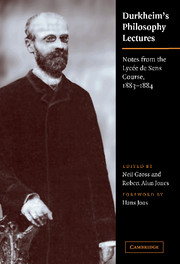Book contents
- Frontmatter
- Contents
- Foreword
- Translators' Note
- Acknowledgments
- Introduction
- Part I Preliminary Matters
- Part II Psychology
- 5 The Object and Method of Psychology
- 6 Faculties of the Soul
- 7 On Pleasure and Pain
- 8 The Inclinations
- 9 The Emotions and Passions
- 10 Theory of Knowledge
- 11 External Perception and Its Conditions. The Senses
- 12 External Perception. The Origin of the Idea of Externality
- 13 External Perception. On the Objectivity of the Idea of Externality. (1) Does the External World Exist?
- 14 External Perception. On the Objectivity of the Idea of Externality. (2) On the Nature of the External World
- 15 Consciousness. On the Conditions of Consciousness
- 16 Consciousness. On the Origin of the Idea of the Self
- 17 Consciousness. On the Nature of the Self
- 18 Reason. The Definition of Reason
- 19 Reason. The Material of Reason. (1) Principles of Reason
- 20 Reason. The Material of Reason (2) Rational or First Ideas
- 21 Reason. Empiricism
- 22 Reason. Evolutionism. The Theory of Heredity
- 23 Reason. On the Objectivity of Rational Principles
- 24 Faculties of Conception. On the Association of Ideas
- 25 Faculties of Conception. Memory
- 26 Faculties of Conception. Imagination
- 27 Faculties of Conception. Sleep. Dreams. Madness
- 28 Complex Operations of the Mind. Attention. Comparison. Abstraction
- 29 Complex Operations of the Mind. Generalization. Judgment. Reasoning
- 30 The Object and Method of Aesthetics
- 31 What Is Beauty?
- 32 Prettiness and the Sublime. Art
- 33 On Activity in General. Instinct
- 34 Habit
- 35 On the Will and on Freedom
- 36 On Freedom (Continued). Psychological Determinism
- 37 On Freedom (Conclusion). Scientific Determinism. Theological Fatalism
- Part III Logic
- Part IV Ethics
- Part V Metaphysics
- Appendix: Biographical Glossary
- Index
7 - On Pleasure and Pain
Published online by Cambridge University Press: 21 October 2009
- Frontmatter
- Contents
- Foreword
- Translators' Note
- Acknowledgments
- Introduction
- Part I Preliminary Matters
- Part II Psychology
- 5 The Object and Method of Psychology
- 6 Faculties of the Soul
- 7 On Pleasure and Pain
- 8 The Inclinations
- 9 The Emotions and Passions
- 10 Theory of Knowledge
- 11 External Perception and Its Conditions. The Senses
- 12 External Perception. The Origin of the Idea of Externality
- 13 External Perception. On the Objectivity of the Idea of Externality. (1) Does the External World Exist?
- 14 External Perception. On the Objectivity of the Idea of Externality. (2) On the Nature of the External World
- 15 Consciousness. On the Conditions of Consciousness
- 16 Consciousness. On the Origin of the Idea of the Self
- 17 Consciousness. On the Nature of the Self
- 18 Reason. The Definition of Reason
- 19 Reason. The Material of Reason. (1) Principles of Reason
- 20 Reason. The Material of Reason (2) Rational or First Ideas
- 21 Reason. Empiricism
- 22 Reason. Evolutionism. The Theory of Heredity
- 23 Reason. On the Objectivity of Rational Principles
- 24 Faculties of Conception. On the Association of Ideas
- 25 Faculties of Conception. Memory
- 26 Faculties of Conception. Imagination
- 27 Faculties of Conception. Sleep. Dreams. Madness
- 28 Complex Operations of the Mind. Attention. Comparison. Abstraction
- 29 Complex Operations of the Mind. Generalization. Judgment. Reasoning
- 30 The Object and Method of Aesthetics
- 31 What Is Beauty?
- 32 Prettiness and the Sublime. Art
- 33 On Activity in General. Instinct
- 34 Habit
- 35 On the Will and on Freedom
- 36 On Freedom (Continued). Psychological Determinism
- 37 On Freedom (Conclusion). Scientific Determinism. Theological Fatalism
- Part III Logic
- Part IV Ethics
- Part V Metaphysics
- Appendix: Biographical Glossary
- Index
Summary
Earlier we defined sensibility as the faculty by which we experience pleasure and pain. But what are pleasure and pain? We can't give a perfect answer to this question, but we can seek out their essential characteristics and try to identify their causes.
These states of consciousness have three main characteristics:
Pleasure and pain are affective phenomena – we experience them without having to do anything at all. Where pleasure and pain are concerned, we're passive. Of course, there's no complete passivity in psychological life – we certainly react in order to decrease pain or increase pleasure. Nevertheless, when it comes to pleasure and pain, we're mostly passive.
The second characteristic of these phenomena is their necessity. We can't stop ourselves from experiencing pleasure and pain. They're the necessary consequence of the prior event that brought them about, and the only way we can modify them is by modifying that event. Through an exercise of will, of course, we can avert our consciousness from pleasure and pain, or make them more intense by giving them our attention. By doing so, we can even take some pleasure in pain, as when we feel melancholy. But while we can have some influence over these feelings, we never control them completely. This was the illusion of the Stoics and the Epicureans, who thought they could eliminate pain by sheer willpower.
[…]
- Type
- Chapter
- Information
- Durkheim's Philosophy LecturesNotes from the Lycée de Sens Course, 1883–1884, pp. 60 - 62Publisher: Cambridge University PressPrint publication year: 2004



